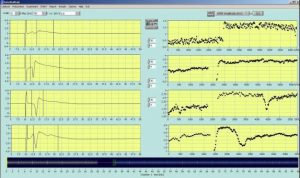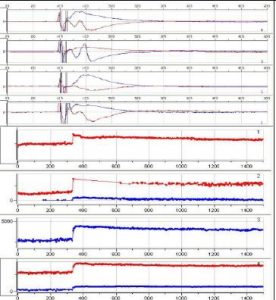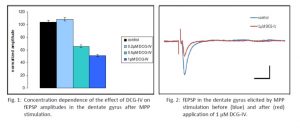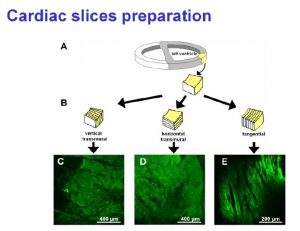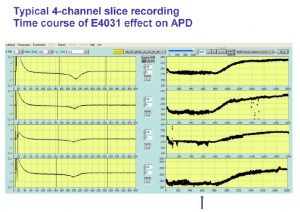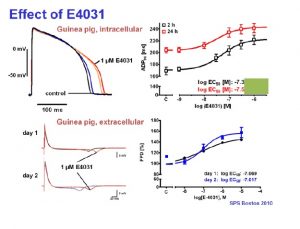Contract Service research
Lohmann Research Equipment offers contract service research for different electrophysiological issues on Slices and Xenopus oocytes
Multiple slice Recording from brain slices
Long-term potentiation in the hippocampus
The hippocampus is a key structure in learning and memory. Memory formation is accompanied by long-term changes in synaptic transmission in hippocampal neurons. At the cellular level, long-term synaptic plasticity (long-term potentiation LTP, long-term depression LTD) can be observed as an increased efficacy in synaptic transmission leading to enhanced postsynaptic responses. Today it is accepted that pathophysiological changes in learning and memory as occuring with neurodegenerative deseases like Alzheimer are accompanied by changes in cellular LTP and LTD.
Metabotropic glutamate receptors
Metabotropic glutamate receptors (mGluRs) are expressed in many different structures of the mammalian CNS, they are involved in different functions, including motor control, spatial memory, olfactory priming, anxiety, and the perception of pain. A loss of mGluR expression can result in CNS malfunctions, like ataxia and learning deficits, and pathological activations of mGluRs have been reported to be linked to neurological disorders, like Chorea Huntington, Alzheimer’s disease, stroke, and epilepsy. Also, mGluRs may be involved in cognitive disorders and schizophrenia. Because they are becoming an increasingly interesting target for pharmacological compounds, reliable and easy-to-handle models for mGluR functions are needed. One model system to study mGluR function in vitro is the medial perforant path-dentate gyrus (MPP-DG) synapse in the hippocampus. In this system, application of the group-II mGluR agonist DCG-IV reduces postsynaptic responses in DG neurons to MPP stimulation.
Experimental models for epilepsy research
The development of antiepileptic drugs critically depends on experimental models that allow testing anticonvulsant effects. Epileptiform activity can be experimentally induced by a variety of methods both in vivo and in vitro, usually by either a reduction of postsynaptic inhibition or by a general increase of spontaneous activity. In vitro, the induction of epileptiform activity in hippocampal or neocortical brain slices can be achieved by an overactivation of postsynaptic NMDA receptors. Usually, NMDA receptors are blocked by Mg2+ ions and this Mg block is only released when postsynaptic neurons are activated through non-NMDA receptors. By reducing the concentration of extracellular Mg2+ ions, epileptiform activity can be easily and reproducibly evoked and antivonvulsant effects of bath-applied compounds can be recorded with minimum experimental effort. Because the hippocampal slice preparation is a well-defined experimental model and the application of Mg2+-free extracellular solutions is easy, this is perfectly suited for pharmacological studies of anticonvulsant compounds on a routinely basis.
Multiple slice Recordings from Heart Slices
Heart Slice Model
The long QT syndrome (LQTS) is characterized by the appearance of long QT intervals in the electrocardiogram. It is accomplished by atypical ventricular tachycardia like torsade de pointes and thus results in a high risk of sudden cardiac death. Therefore, the evaluation of a QT prolongation due to the action of new compounds plays an essential role in pharmacological development of new drugs and in safety pharmacology. Beside the common in vivo measurements of animal ECG and in vitro assays like the Langendorff heart model or the patch clamp analysis of herg channels expressed in mammalian cell lines the new technique of isolated living heart slices was developed during the last years. Our results demonstrate that standardized heart slices with normal physiology and pharmacology can be prepared from nearly any adult laboratory animal (mouse, rat, guinea pig, etc.) and even from human biopsy material.
Physiological parameters including action potential duration (APD) can be measured over up to 30 hours with the Synchroslice multiple slice evaluation system in up to 4 heart slices simultaneously. Different test procedures can be performed including extracellular recording of stimulus induced cardiac field potentials or intracellular recordings from single cardiac myocytes. Many different parameters, e.g. action potentials duration, amplitude, latency, transmural differences, refractory periods, etc. are analyzed automatically.
Summary Heart slice method
- Extracellular and intracellular recordings from cardiac slices correlate well with established in vivo and in vitro models in terms of pharmacology and predictability
- Cardiac slices are easy to handle and can be maintained over several days, allowing the reuse of the same preparations and the evaluations of long-lasting drug effects
- As many tissue slices can be prepared from one heart, the slice technique reduces the number of laboratory animals substantially
- Compared to other multi-cellular preparations cardiac slices offer the possibility of an enhanced throughput
Contact Us
You need more information? Just send us an email – we will get in contact with you as soon as possible
Ecocyte mRNA & cDNA Injection service
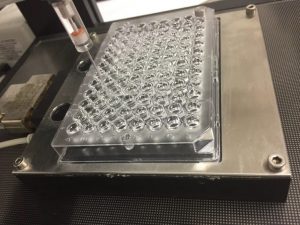 Injected oocytes can also be used for a nu
Injected oocytes can also be used for a nu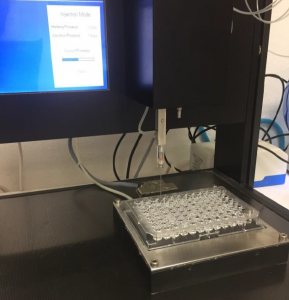 mber of experimental assays in which expression of membrane proteins must be analysed, including studies of ion channel mutants. We therefore provide oocytes injected with cDNA or cRNA. You send us your wild-type or mutant mRNAs and we inject the number of oocytes requested and send them back with our overnight delivery service after expression of the membrane proteins. We inject all oocytes by use of the Roboocyte® TEVC and Injection automate (Multichannelsystems, Reutlingen, Germany). You can also tag the RNA with GFP in case that you want to control the expression under the fluorescent microscope.
mber of experimental assays in which expression of membrane proteins must be analysed, including studies of ion channel mutants. We therefore provide oocytes injected with cDNA or cRNA. You send us your wild-type or mutant mRNAs and we inject the number of oocytes requested and send them back with our overnight delivery service after expression of the membrane proteins. We inject all oocytes by use of the Roboocyte® TEVC and Injection automate (Multichannelsystems, Reutlingen, Germany). You can also tag the RNA with GFP in case that you want to control the expression under the fluorescent microscope.
TEVC Recording in Xenopus Oocytes
Heterologous expression
In order to study the physiological and pharmacological properties of membrane proteins, like ion channels or transporters, these proteins can be expressed in heterologous expression systems. We routinely use oocytes from the African clawed frog Xenopus laevis as an expression system. Because we have our own Xenopus colony, a continuously high quality of our oocytes is assured.
Xenopus oocytes allow to record reliable and reproducible membrane currents elicited after activation of voltage-gated or ligand-gated ion channels as well as membrane transporters by two electrode voltage clamp (TEVC) techniques. Expression rates can as high as 90% depending on the contruct used for injection. Because we use an automated system for both cDNA or cRNA injection and for TEVC recording large numbers of cells can be tested within a short period of time.
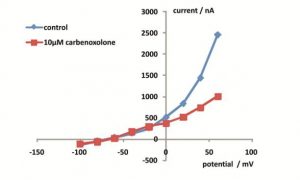
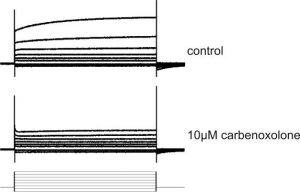
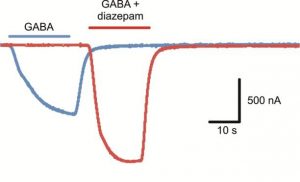
For voltage gated ion channels, like for example Panx1 hemichannels, almost every necessary voltage protocol can be used. In addition, specific pharmacologically active compounds can be applied that block or facilitate ion channel activity.
For ligand gate ion channels, like for example the GABAA receptor, a fast application system assures proper activation, facilitation or inactivation of the ion channel of interest.
Contact Us
You need more information? Just send us an email – we will get in contact with you as soon as possible
